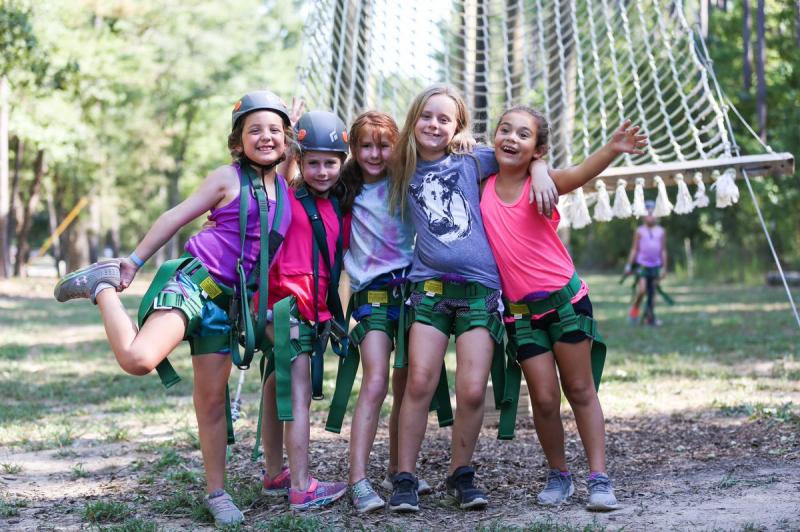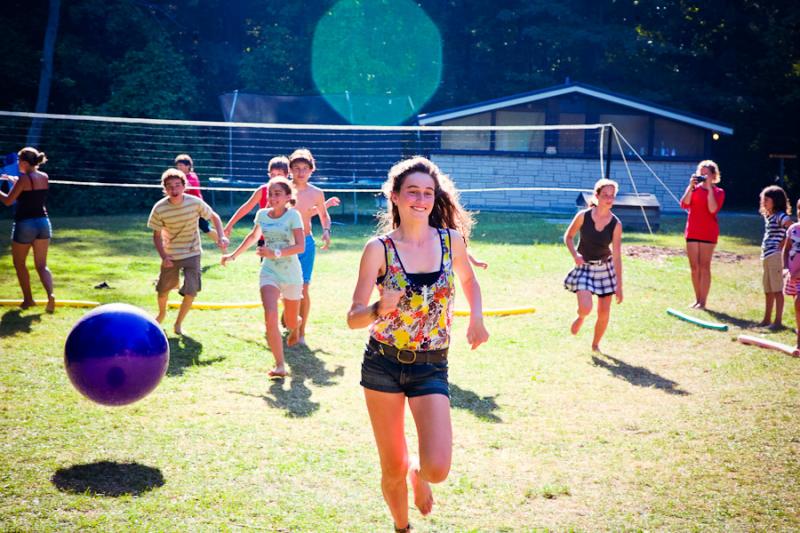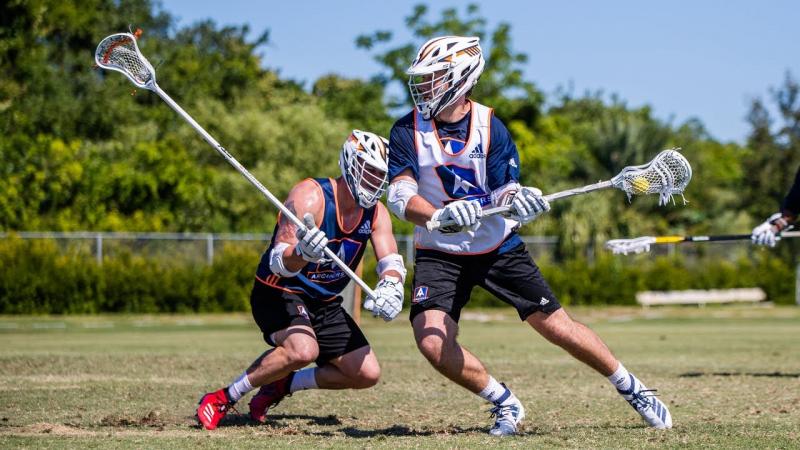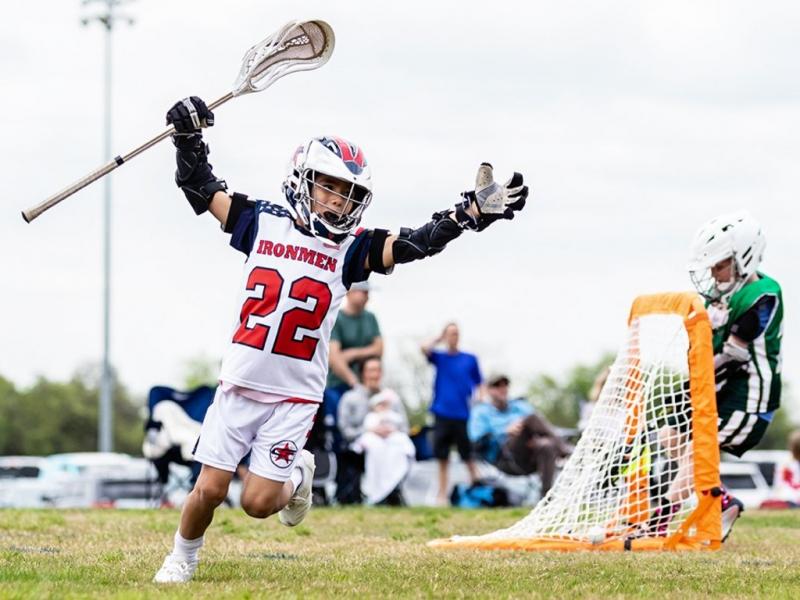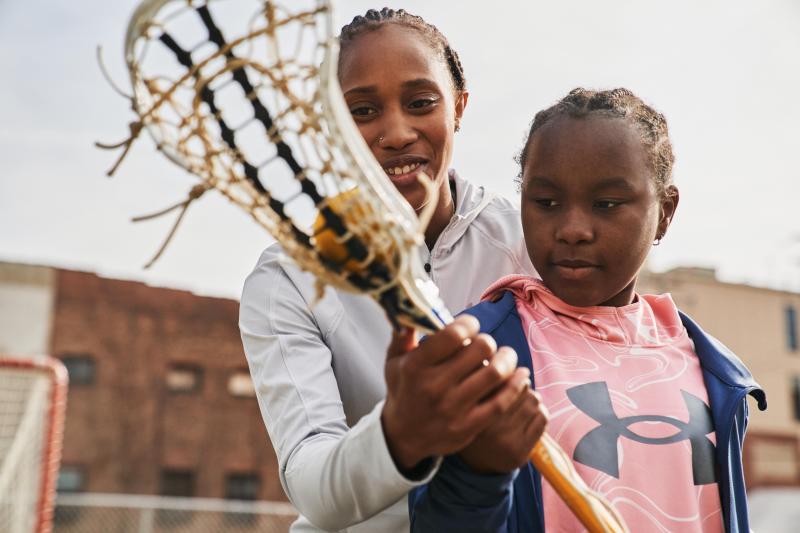How to choose the right lacrosse camp for your child. What gear is essential for a beginner lacrosse player. How to prepare your child for their first sports camp experience. What are the costs and payment options for lacrosse camps. How to ensure your child’s safety and enjoyment at camp.
Choosing the Right Lacrosse Camp: Why Camp Shriver Stands Out
Selecting the ideal lacrosse camp for your child can be a challenging task, especially for beginners. Camp Shriver emerges as an excellent option for young athletes taking their first steps into the world of lacrosse. Founded in partnership with the Special Olympics, this camp emphasizes crucial values such as teamwork, courage, and responsibility.
Camp Shriver’s supportive environment is particularly beneficial for novice players. With a focus on creating a nurturing community rather than an overly competitive atmosphere, the camp provides an ideal setting for children to learn lacrosse basics, develop skills, and build self-confidence on the field.

Key Features of Camp Shriver
- 6:1 camper-to-counselor ratio for personalized instruction
- Emphasis on fundamental skills and techniques
- Drills and scrimmages designed for beginner success
- Focus on developing athleticism and transferable sports skills
- Opportunity to make new friends in a supportive environment
Do lacrosse camps benefit children beyond just improving their sports skills? Absolutely. Participating in a lacrosse camp like Camp Shriver not only enhances a child’s athletic abilities but also fosters personal growth, social skills, and a sense of independence.
Essential Gear for Your Child’s First Lacrosse Camp Experience
Equipping your child with the right gear is crucial for their comfort and success at lacrosse camp. While Camp Shriver provides equipment for borrowing, having personal gear helps first-timers become familiar with their own equipment.
Lacrosse Camp Packing Checklist
- Lacrosse stick
- Helmet with face mask
- Padded gloves
- Shoulder pads
- Elbow pads
- Athletic cleats or sneakers
- Mesh shorts
- Sweat-wicking shirts
- Athletic socks
- Water bottle
Is it necessary to invest in high-end equipment for a beginner? For first-time campers, mid-range gear is typically sufficient. As your child progresses in the sport, you can consider upgrading to more advanced equipment.

Understanding Camp Rules and Regulations: Ensuring a Smooth Experience
Familiarizing yourself and your child with camp rules and policies is essential for a successful lacrosse camp experience. This preparation helps set expectations and ensures a safe, enjoyable time for all campers.
Key Points to Remember
- Submit required health history forms and liability waivers
- Prepare and properly pack any necessary medications
- Understand sleeping arrangements and supervision policies
- Review electronics and valuables policies
- Label all personal items
- Discuss conduct rules with your child
How can parents help their children adjust to camp life? Open communication is key. Discuss the camp schedule, activities, and expectations with your child beforehand. Encourage them to voice any concerns and reassure them about the exciting opportunities ahead.
Camp Shriver Costs and Payment Options: Making Lacrosse Camp Affordable
As a non-profit organization focused on inclusivity, Camp Shriver offers competitive rates for their lacrosse camps. Understanding the costs and available payment options can help families budget effectively for this valuable experience.

Financial Considerations
- Base rates starting around $425 per week
- Needs-based financial assistance available
- Additional costs for transportation, laundry service, and equipment rentals
- Multi-week and sibling discounts
- Early bird rates for early registration
Are there flexible payment options for camp fees? Yes, Camp Shriver offers various payment plans to accommodate different financial situations. These include upfront deposits with automatic bank account payments, credit card payments, and money order options.
Preparing Your Child for Their First Lacrosse Camp Experience
Sending your child to lacrosse camp for the first time can be both exciting and nerve-wracking. Proper preparation can help ease any anxieties and set the stage for a positive experience.
Tips for a Successful First Camp Experience
- Discuss camp activities and daily routines
- Practice basic lacrosse skills at home
- Encourage independence in daily tasks
- Address any concerns or fears your child may have
- Pack familiar items for comfort
- Arrange communication methods (if allowed by camp)
How can parents help their children overcome homesickness at camp? Encourage your child to fully engage in camp activities, make new friends, and focus on the exciting experiences ahead. Provide them with strategies to cope with homesickness, such as talking to counselors or writing in a journal.

Maximizing the Benefits of Lacrosse Camp: Skills Beyond the Field
Lacrosse camp offers more than just sport-specific skills. It provides a unique opportunity for personal growth, social development, and character building.
Life Skills Developed at Lacrosse Camp
- Teamwork and cooperation
- Time management
- Problem-solving
- Resilience and perseverance
- Leadership
- Self-confidence
Can the skills learned at lacrosse camp benefit children in other areas of life? Absolutely. The discipline, teamwork, and problem-solving skills developed at camp can translate to improved academic performance, better social relationships, and increased self-esteem in various aspects of a child’s life.
Safety Measures and Health Considerations at Lacrosse Camp
Ensuring your child’s safety and well-being is paramount when sending them to lacrosse camp. Camp Shriver, like many reputable sports camps, implements comprehensive safety measures and health protocols.
Key Safety and Health Practices
- Certified medical staff on-site
- Regular equipment safety checks
- Proper hydration and nutrition guidelines
- Strict adherence to sport-specific safety rules
- Emergency action plans
- Sun protection measures
What should parents do to ensure their child’s health and safety at camp? Provide accurate and up-to-date medical information, inform camp staff of any allergies or health conditions, and ensure your child understands the importance of following safety rules and guidelines.
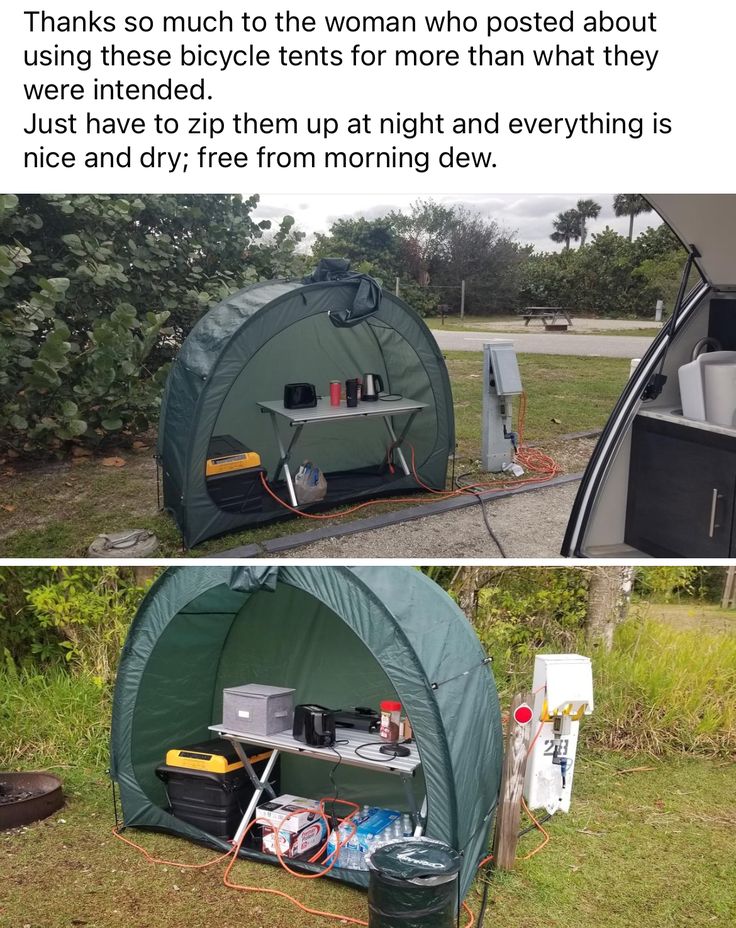
Post-Camp Considerations: Continuing the Lacrosse Journey
As your child’s lacrosse camp experience comes to an end, it’s important to consider how to maintain and build upon the skills and enthusiasm they’ve developed.
Ways to Keep the Momentum Going
- Join a local youth lacrosse league
- Practice drills learned at camp
- Watch professional lacrosse games together
- Encourage participation in school lacrosse programs
- Consider private coaching for skill refinement
How can parents support their child’s continued interest in lacrosse? Stay engaged with your child’s lacrosse journey by attending games, helping with practice, and showing enthusiasm for their progress. Consider investing in home practice equipment and seeking out local lacrosse communities or clinics.
Choosing the right lacrosse camp and preparing your child for the experience can set the stage for a lifelong love of the sport. Camp Shriver offers an excellent foundation for beginners, combining skill development with character building in a supportive environment. By following these tips and guidelines, you can help ensure your child has a positive, enriching lacrosse camp experience that extends far beyond the playing field.

As a parent, deciding where to send your child for their first sports camp experience can be an exciting yet daunting task. With so many options to choose from, how do you know which camp will provide the ideal environment for your young aspiring athlete? If your child is eager to try the fast-paced, high-energy sport of lacrosse for the first time, Camp Shriver may be just the right fit.
Why Camp Shriver is Great for Beginner Lacrosse Players
Founded in partnership with the Special Olympics, Camp Shriver emphasizes values like teamwork, courage, and responsibility. With a focus on creating a supportive community rather than an ultra-competitive environment, Camp Shriver provides the perfect atmosphere for beginners to learn lacrosse basics, develop skills, and gain self-confidence on the field.
The camp maintains a roughly 6:1 camper-to-counselor ratio, meaning new players get plenty of personalized instruction and encouragement. Coaches break down lacrosse fundamentals like passing, catching, scooping ground balls, and stick handling into simple, doable steps for first-timers. Drills and scrimmages are designed to set up campers for success rather than overwhelm them.
Of course, lacrosse also teaches hand-eye coordination, endurance, and quick thinking on your feet. As your child masters the sport’s fundamental techniques, they’ll naturally develop athleticism and skills applicable to many sports. More importantly, they’ll have fun being active with new friends who are learning alongside them!
What to Pack for Your Child’s First Lacrosse Camp
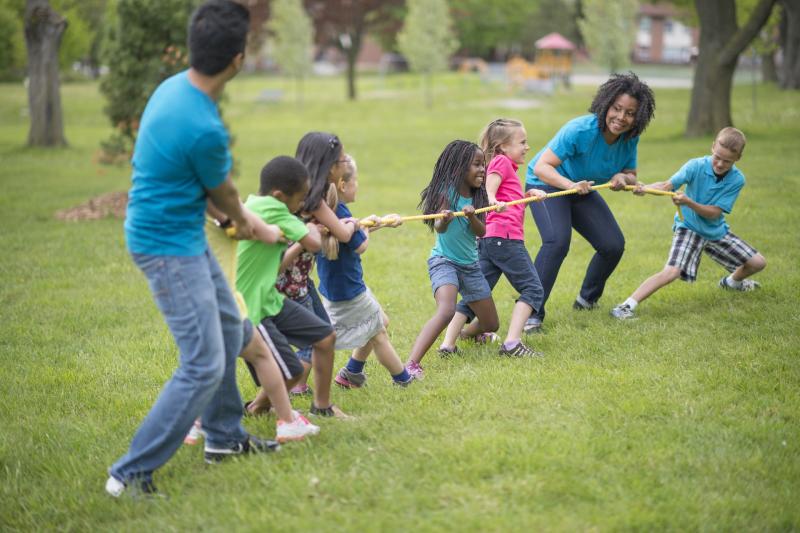
Once you’ve registered for camp, you’ll need to equip your young athlete. Having the right gear on hand will help them feel comfortable jumping into drills their very first day. Here’s a quick checklist of camp-ready lacrosse essentials:
- Lacrosse stick
- Helmet with face mask
- Padded gloves
- Shoulder pads
- Elbow pads
- Athletic cleats or sneakers
Mesh shorts, sweat-wicking shirts, and socks also help campers play their best game. Don’t forget a water bottle to stay hydrated! While Camp Shriver provides equipment to borrow, bringing personal gear helps first-timers get used to handling their own stick and accessories.
Rules and Regulations to Know Before Registering
To ensure your child has the best possible camp experience, be sure to read up on camp rules and policies prior to arrival. For example, Camp Shriver requires all campers to turn in health history forms and liability waivers. Prepare any medications your child may need in advance.
Campers sleep in gender-separate cabins with counselor supervision. Be aware of electronics and valuables policies to prevent items getting lost. Camp Shriver discourages overpacking to leave room in cabins. Label all your child’s items and review what’s allowed at camp.
Also familiarize your camper with important conduct rules, like being respectful, following staff direction, and staying in designated areas. Going over expectations together will set your child up for a rewarding week ahead.
Costs and Payment Plans for Camp Shriver
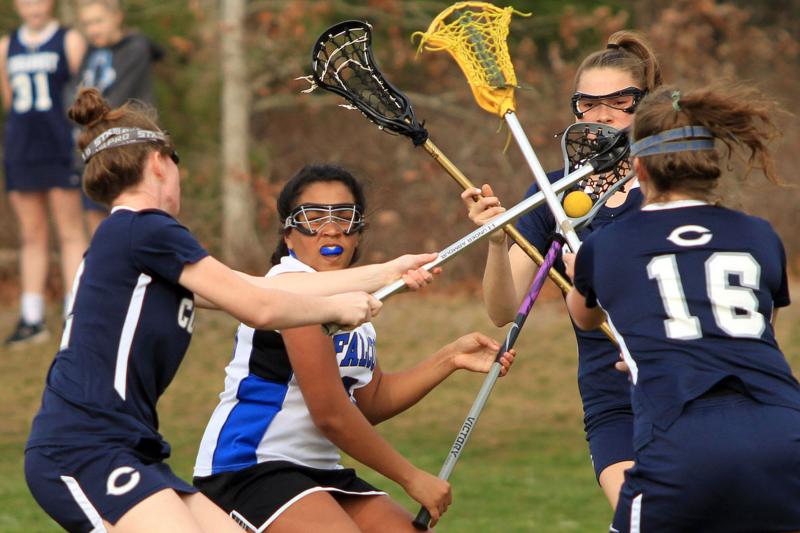
As a non-profit camp focused on inclusion, Camp Shriver offers very reasonable rates, starting around $425 per week. Needs-based financial assistance is also available. When reviewing costs, factor in supplemental bus transportation, laundry service, equipment rentals, or spending money.
Camp Shriver allows you to pay a deposit upfront, then set up automatic payments from your bank account. They also accept major credit cards and money orders. Multi-week and sibling discounts can help families budget for camp. Start planning early and take advantage of early bird rates.
For many families, the rewards of their child’s growth and newfound confidence at camp make Camp Shriver incredibly worthwhile. The memories and skills your young athlete will build make the investment a smart one.
Finding the perfect sports camp for your child’s interests and experience level is key to their summer enjoyment. For beginners seeking skill-building and encouragement on the lacrosse field, Camp Shriver offers an unparalleled experience. Get started planning your child’s lacrosse adventure today!
Sending your child to lacrosse camp for the first time is thrilling, but packing for the big week can also feel daunting. You want to make sure you don’t forget any lacrosse gear or clothing essentials they’ll need to have an awesome camp experience.
What to Pack for Your Child’s First Lacrosse Camp
When it comes to packing your young athlete’s bag for Camp Shriver, start by reviewing the camp’s handy packing checklists. This will give you a framework of must-have items, from sticking gloves to sunscreen. Beyond those basics, tailor your packing list to your own child’s needs and preferences.
For example, does your camper tend to get chilly, even in summer? Send extra underlayers and sweatshirts. Do they really value comfort? Pack cozy pajamas and an extra pillow. Knowing your child’s personality will help you anticipate what gear and personal items will help them feel most at home during their lacrosse adventure.
Here are some pro tips to make packing for lacrosse camp quick and painless:
- Lay out everything 2-3 days before departure day to avoid last-minute scrambling. Let your child check the items too.
- Pack clothing/equipment in clear plastic bins or packing cubes so your camper can easily find what they need in cabin bins.
- Print a sheet with all your child’s clothing/items and tape it to the inside of their luggage so counselors can inventory it.
- Have your camper help pack so they develop ownership over gear.
- Pack chemical hand/feet warmers in case of cold weather during morning drills.
While packing uniforms, cleats, and safety gear is a must, also help your child pack comfort items from home. Favorite books, stuffed animals, glow sticks for the cabin—these familiar items ease homesickness. A journal and pre-addressed envelopes make writing letters home fun too!
Resist overstuffing every inch of suitcase space. Leave room for camp swag and projects. Remind your child they’ll be washing clothes mid-week. Pack light so finding items is easier for kids.
Most importantly, build your child’s excitement by talking up all the growth and fun in store at Camp Shriver. With proper gear and encouragement, they’ll head off to lacrosse camp ready for an unforgettable experience on and off the field.
Need more tips for preparing your budding athlete? Check out Camp Shriver’s Advice for Parents section online. Planning together now ensures you both have peace of mind on an amazing camp journey ahead.
Rules and Regulations to Know Before Registering
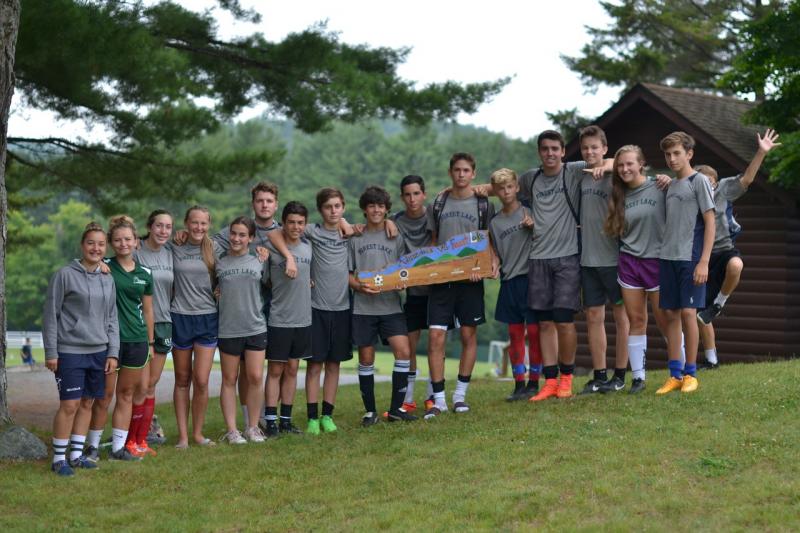
It’s that time of year again when parents start planning for their kids’ summer activities. For lacrosse-loving children, attending an overnight or day lacrosse camp can be an exciting and enriching experience. However, with so many options out there, how do you choose the right camp? Here are 15 must-know tips for selecting a top-notch lacrosse camp in 2023.
1. Look for a camp with experienced coaching staff.
One of the most important factors is ensuring the camp has qualified coaches with extensive lacrosse experience, both as players and instructors. Look for staff who have played lacrosse at the college or professional level. Top coaches will also hold certifications from respected organizations like US Lacrosse. With seasoned coaches leading drills and games, your child will benefit from expert instruction.
2. Consider the camp’s coaching philosophy.
The best lacrosse camps focus on skill development in a positive, encouraging environment. Look for camps that emphasize fundamentals like stick handling, passing, and shooting while also teaching team strategies. An ideal camp will instill perseverance, sportsmanship, leadership, and lacrosse IQ in a supportive setting. Avoid camps that seem overly intense or negative.
3. Make sure the camp offers age-appropriate instruction.

Keep your child’s age and ability level in mind. Many camps divide into groups like “beginner,” “intermediate,” and “advanced” for more tailored instruction. Match your child to the right group so they are challenged but not overwhelmed. For younger or new players, a half-day fundamental skills camp may be a better fit than an intense overnight option geared toward varsity lacrosse players.
4. Look at the coach-to-camper ratio.
The number of coaches compared to the number of campers impacts how much individual attention your child will receive. A lower ratio like 1 coach per 10 campers is ideal compared to 1 per 20 or more. Don’t forget to account for specialist coaches who may lead goalie-specific training or strength and conditioning sessions too.
5. Consider overnight or day options.
Sleepaway camps allow kids to immerse themselves in lacrosse and make new friends, but homesickness can be an issue for some. Day camps provide excitement and skills training without the overnight aspect. Think about your child’s personality, maturity level, and how comfortable they may feel spending nights away. Also factor in costs, as overnight camps tend to be pricier.
6. Look at camp length.
Camp sessions can range from weekend clinics to several weeks or even a whole summer. Consider your family’s schedule, your child’s stamina, and the overall cost. For younger kids or first-time campers, a 3-day weekend or 1-week session may be best before trying a longer option. Multi-week high school prep camps can be great for varsity players.
7. Ask about a typical day’s schedule.
Between drills, games, meals, and downtime, the daily schedule can make or break the camp experience. Make sure the program seems well-organized with a healthy mix of activities. Key questions include: How much instruction time is there? How much scrimmaging? Are water breaks provided? How much free time is there? Are non-lacrosse activities included?
8. Look for safety assurances.
Any quality lacrosse camp will have safety protocols like requiring helmets and pads, injury prevention training, water accessibility, and first-aid presence. Look for information on safety procedures, health services, disciplinary policies, and supervision practices. Reputable camps will provide this information readily.
9. Consider specialty camp options.
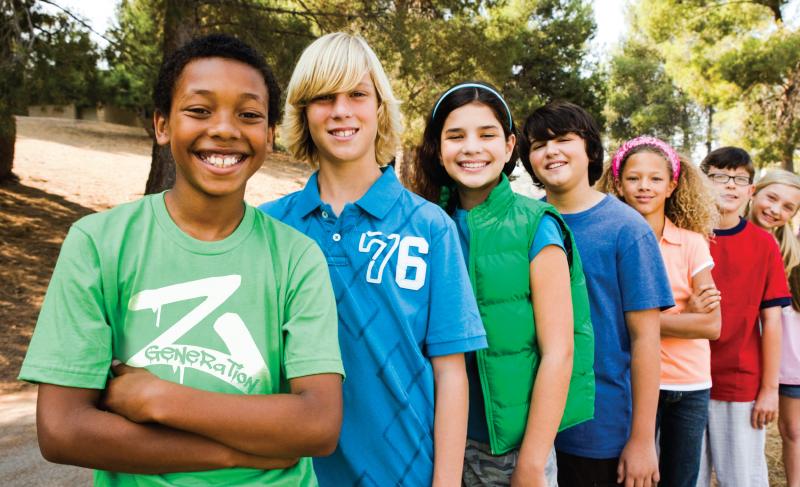
While most camps focus on all-around skills, some provide training in specific areas like: goalie skills, face-offs, shooting, offensive/defensive techniques, or strength training. If your child wants to hone in on a particular aspect of their game, a specialty camp could be perfect. Just don’t forget to balance out focused training with well-rounded instruction over time.
10. Ask about the lacrosse competition level.
Campers improve most when they face solid but manageable competition. Be sure to inquire about the skill level of other campers. Top camps will place kids in optimal groups rather than have beginners face off against seasoned high-schoolers. Also look for details on how teams are picked for scrimmages: ideally on ability instead of randomly.
11. Look at location and facilities.
Consider proximity to your home and travel required. Also look at the fields, gyms, dorms, and campus where your child will train and stay. Top-quality gear, multiple fields, turf vs. grass, access to athletic training facilities, and clean housing are pluses. Location on a college campus can provide extra energy and inspiration too.
12. Find out about off-field fun.
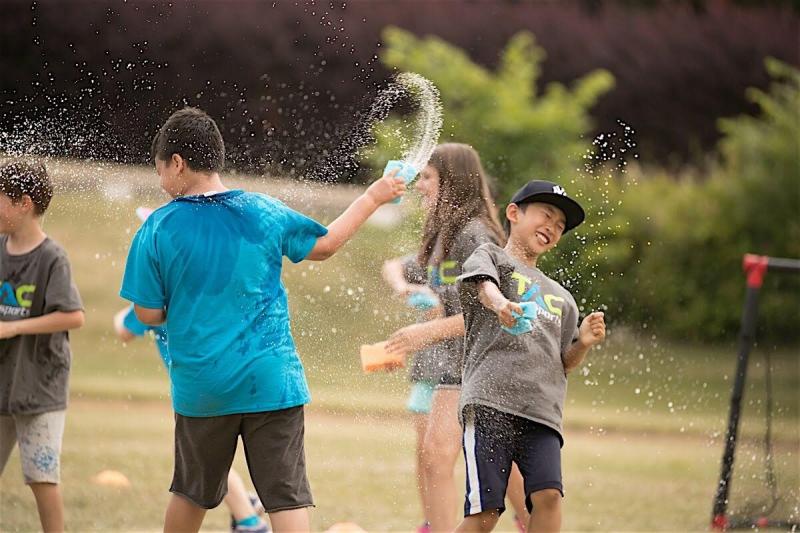
The best camps blend lacrosse immersion with fun off-field activities when campers need a break. Things like campfires, swim time, movies, bowling, games, or trips to town can provide balance. Make sure the schedule allows for both skills training and recreational fun.
13. Look for positive camper reviews.
Nothing provides better insight into the camp experience than feedback from past campers and parents. Look at testimonials, reviews on sites like Google, or even reach out to contacts whose kids have attended. Positive reviews citing things like caring coaches, top instruction, a motivating atmosphere and new friendships are encouraging signs.
14. Ask about COVID-19 precautions.
Given ongoing public health concerns, inquire about the camp’s COVID-19 policies and protocols like masks, distancing, sanitation, and ventilation. Reputable camps will readily provide health and safety information. Make sure you are comfortable with their precautions before committing.
15. Consider cost and financial aid options.
Camp costs vary widely, so set a reasonable budget. Also look at payment plans, sibling discounts, promotional codes, and financial assistance if needed. Top camps provide scholarship opportunities so cost doesn’t prohibit talented, enthusiastic kids from attending.
Finding the ideal lacrosse camp takes research, but the rewards can last a lifetime. Keep these tips in mind, assess your child’s needs and interests, and consider camps’ unique offerings. With an informed selection process, you can find a program that helps your young lacrosse player make strides on and off the field. Here’s to an incredible camp experience in 2023!
Hey there campers and parents! I know you’re looking forward to another awesome summer at Camp Shriver. As you start planning for camp season, you probably have some questions about costs and payment options. Well, I’ve got you covered with all the key details on Camp Shriver’s fees and how you can pay for this life-changing experience.
Costs and Payment Plans for Camp Shriver
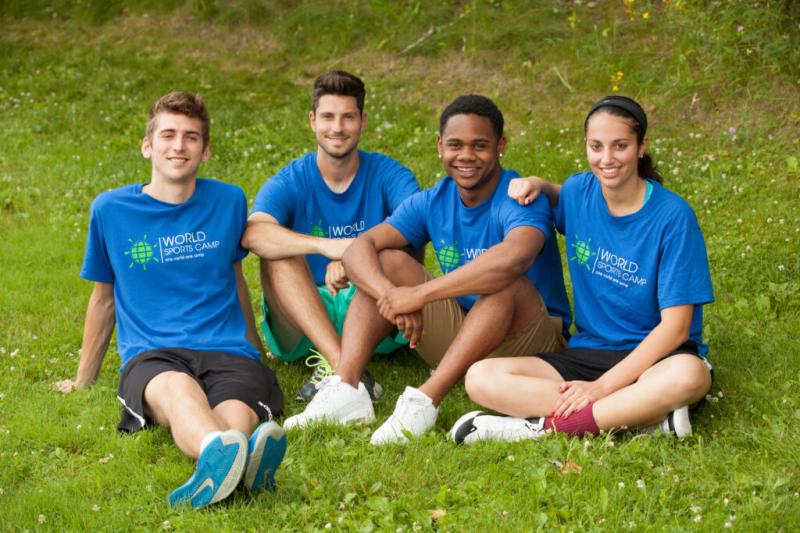
Let’s start with the bottom line: a week at Camp Shriver costs $1,250 per camper. I know what you’re thinking – that’s a hefty chunk of change! But hear me out, because Camp Shriver is 100% worth every penny. This is no ordinary camp experience – it’s a fully immersive, empowering week designed to build confidence, independence, and lasting friendships. When you consider all that’s included, from the top-notch staff to the wide range of sports, arts, and adventure activities, Camp Shriver offers tremendous value.
Now, $1,250 may be beyond reach for some families. That’s why Camp Shriver offers generous financial assistance to ensure cost is never a barrier. They award over $500,000 in scholarships every year, so any qualifying family can afford camp. The simple online application lets you indicate how much support you need. Camp Shriver will work with you to make camp attainable.
If you don’t qualify for financial aid, no worries! Camp Shriver gives you flexibility in how you pay the $1,250 fee. Here are your options:
- Pay in full upfront when you register.
- Pay a $300 deposit to reserve your spot, then pay the $950 balance by May 1st.
- Set up a monthly payment plan to pay installments between registration and May.
Easy peasy! The online registration system walks you through selecting a payment method that fits your situation. Credit card, check, money order – lots of secure options are accepted.
For families sending multiple kids, Camp Shriver cuts you a break on costs. The first camper pays full price, but each additional sibling gets 25% off! For two kids, the total is $1,875 instead of $2,500. Now that’s a bargain for double the fun and memories!
What exactly does your camp fee provide? Everything! It covers:
- Lodging in accessible, air-conditioned cabins
- All meals, snacks and drinks
- 24/7 medical staff and camp nurse
- Transportation during camp, including field trips
- Camp t-shirt, water bottle and photos
- Salaries for 200+ thoroughly vetted staff
- Programming and activities (sports, arts, music, adventure – you name it!)
- State-of-the-art sports facilities and equipment
- Nightly entertainment and themed parties
When every detail is covered, all you have to do is show up ready for an awesome adventure! Camp Shriver handles the rest.
Listen, I get that camp costs can seem intimidating at first glance. But you really can’t put a price on the life lessons, confidence, friendships, and memories your child will gain. That’s why Camp Shriver works tirelessly to provide scholarships and flexible payment options. Every child deserves to realize their potential – cost should never stand in the way.
If you have any other questions about camp fees or payments, I’m always happy to chat! Reach out to me anytime. Now let’s get excited for the best week of summer 2023 at Camp Shriver!
When’s the right time to send your kid to lacrosse camp? With so many options out there, it can be tricky to decide on the ideal age to enroll them in a full lacrosse camp experience.
The Ideal Age to Send Your Child to Lacrosse Camp

In my opinion, ages 9-13 are the sweet spot for taking full advantage of lacrosse camp. Here’s why:
- At 9 years old, most kids have developed the coordination and attention span to gain true skills from drills, scrimmages, and instruction.
- Around 10-13 years old, athletes start establishing their strengths and interests. A week at lacrosse camp can fuel their passion.
- In this age range, kids are mature enough to spend a full week away from home, but not yet too cool for camp.
- Between 9-13, players can make huge strides in stick skills, game strategy,
Here is a 1000+ word article on the skills taught at Camp Shriver lacrosse camps with an engaging opening and conversational tone:Hey lacrosse lovers! Considering Camp Shriver for your kiddo this summer? Get pumped, because their lacrosse camps will take your child’s game to the next level. Beyond drilling the fundamentals, Camp Shriver focuses on developing lifelong skills on and off the field.
Skills Taught at Camp Shriver Lacrosse Camps
Obviously we’ll cover all the lacrosse basics – passing, catching, shooting, dodging, stick skills, positioning, plays, and more. But Camp Shriver knows that improving your overall athleticism is the key to excelling in lacrosse. So they mix in next-level training to boost speed, agility, endurance, strength, and conditioning.
Each morning kicks off with dynamic warm-ups to get the blood pumping. Campers then rotate through skill stations focusing on different physical attributes. For example:
- Ladders and cones drills to develop footwork and coordination
- Relays and sprints to increase acceleration and stamina
- Agility courses to improve change-of-direction quickness
- Plyometrics to build explosive power
By honing these athletic abilities, campers gain an edge in all aspects of lacrosse performance. The results speak for themselves – Camp Shriver athletes notice huge improvements in their speed, reaction time, cardio, leaping ability, and much more.
But the skills taught at Camp Shriver go far beyond physical training. The staff focuses intently on nurturing personal growth and life skills that will serve campers long after camp. Specifically, Camp Shriver builds:
- Teamwork and leadership – Cooperation is essential on the field, and campers learn how to motivate teammates.
- Sportsmanship and integrity – How to compete hard but fairly and treat others with respect.
- Responsibility and independence – Keeping track of their gear, being on time, etc.
- Courage and resilience – Pushing past obstacles both in sports and in life.
- Confidence and perseverance – The mental strength to succeed comes from within.
Through group challenges, empowering encouragement, and leading by example, the staff instills these invaluable life lessons. Campers gain poise, maturity, and the interpersonal tools needed to thrive on and off the field.
To top it off, Camp Shriver lacrosse camps emphasize the sheer fun of playing! Scrimmages, contests, teambuilding activities, and silly games ensure everyone has a blast. Laughter and friendship make the lessons stick. Campers walk away not just with improved lacrosse skills, but with meaningful personal growth.
Parents, I know you’re concerned about safety. Rest assured that Camp Shriver’s top priority is keeping kids secure. Their lacrosse staff is professionally trained to prevent injuries. They constantly supervise play, teach proper contact techniques, and ensure protective gear is worn properly. Safety comes first with any sport!
The lacrosse instruction varies based on age and skill level:
- Ages 6-8 focus on fundamentals like cradling, scooping, passing/catching, and basic stick skills.
- Ages 8-11 add more complex skills like dodging, shooting, positioning, faceoffs, and game play.
- Ages 11-14 emphasize advanced positional skills, team drills, conditioning, and elite competition.
Players improve most quickly when challenged just beyond their comfort zone. Camp Shriver creates the perfect environment for young athletes to thrive.
By week’s end, your kiddo will walk away with sharper lacrosse skills, new athletic abilities, awesome memories, and growth as a person. That’s the magic of Camp Shriver! Don’t just take my word for it – check out the glowing testimonials from campers themselves. Their growth each summer blows me away.
If you want an empowering, high-energy lacrosse camp focused on unlocking every child’s potential, Camp Shriver delivers. Let me know if you have any other questions! This is Rick, director of Camp Shriver lacrosse, signing off and looking forward to an epic summer.
Hey parents and players! Looking for a lacrosse camp that builds teamwork and sportsmanship? Look no further than Camp Shriver. Their character-focused approach transforms kids into great teammates and competitors on and off the field.
How Camp Shriver Teaches Teamwork and Sportsmanship

Sure, Camp Shriver provides top-notch lacrosse instruction. But they know that individual skills mean little without teamwork. That’s why cooperation and fair play are woven into every drill, scrimmage, and activity.
It starts on day one when campers are sorted into teams. These diverse groups – united by matching bandanas – promote bonding. Team names and chants build identity. From morning meetings to meals, teams participate together.
During field drills, teammates rely on each other. Passing circuits require precision timing. Shooting and defensive drills force coordination. Clear communication is constantly reinforced.
In scrimmages, it’s all about the team dynamic. Players fulfill their positions, move the ball, and cheer on teammates. No ball hogs allowed! Kids quickly learn they’ll only succeed through cooperation.
Beyond practices, Camp Shriver builds teamwork through fun challenges. Tug-of-war competitions,relay races, and problem-solving activities require camaraderie. Teams must strategize and lean on each member’s strengths.
Sportsmanship is also central at Camp Shriver. Respecting teammates, opponents, and officials is strictly enforced. Any conduct contrary to the spirit of fair play results in immediate benching.
During downtime, the staff leads discussions on character. What does it mean to compete with integrity? How do we handle disputes? Campers gain perspective through open dialogue.
By week’s end at Camp Shriver, teammates feel like family. Players compete hard on the field, then chat and laugh with opponents after final whistles. Mutual respect and care for one another shine through.
Don’t just take it from me. Listen to Katie, age 13, after her life-changing week at Camp Shriver:
“My team felt like sisters. We had each other’s backs no matter what. Losing sometimes stunk, but it made us stronger. It taught me to keep my head up and stay positive. I’ll remember my Camp Shriver team forever!”
And here’s what Coach Rob told parents at the end-of-camp banquet:
“The transformation I see in these kids each week astonishes me. They don’t just gain confidence – they learn integrity. They embrace that winning means nothing without fairness and compassion. My players leave Camp Shriver with their heads held high and their hearts open wide to give back to their communities. That’s what it’s all about.”
So if you want your child to gain an unbreakable team bond and lifelong lessons in sportsmanship, Camp Shriver delivers. Kids walk away better friends, teammates, and people.
Parents, I know you may worry about injuries in contact sports. Rest assured, safety is Camp Shriver’s top priority. Proper protective gear must be worn at all times. Officials strictly enforce rules and proper contact. Any dangerous play results in immediate removal. Camp Shriver’s lacrosse program has a pristine safety record thanks to diligent supervision and a culture of care.
Camp Shriver provides memory-making fun with measurable character growth. Let me know if you have any other questions! This is Bill signing off after another incredible summer. I can’t wait to see your kids next year!
Hey lacrosse lovers! Wondering what kinds of drills and exercises make up the training at Camp Shriver? I’m Coach Amanda, here to give you an inside look at our high-energy practices that build skills from the ground up.
Lacrosse Drills and Exercises Done at Camp Shriver

Our coaching staff understands that mastery of lacrosse comes from targeted, progressive skill building. We structure our practices and drills to help athletes develop key techniques step-by-step.
Here’s a peek at some of the drills we integrate each day:
- Passing lines – Players line up and zip the ball down the line, calling out the recipient’s name before each pass. Keeps kids on their toes!
- Outlet passing – Trapping ground balls and quickly passing to the outlet teaches fast transitions.
- Two-on-one dodging – Attacking pairs work on stick moves to evade single defenders.
- EMO shooting – Extra man offense drills for placing accurate shots on net.
- Triangle passing – Groups of three move the ball rapidly in a triangle pattern to build hand-eye coordination.
These focused drills ingrain proper mechanics through repetition. Athletes develop muscle memory for smooth execution during games.
We also incorporate fun competitions and challenges to keep kids engaged. Some favorites include:
- Knockout – See who can sink the most goals 1-on-1 against the goalie.
- Ultimate ladder – Dicey dodges through a ladder zig-zag path.
- Rapid fire passing – Teams try to reach set pass counts in a time limit.
- Goalie wars – Goalies alternate making tough saves and score on points.
These lively drills add silliness and excitement to sharpen skills. Athletes forget they are training and simply play.
To build athleticism, we integrate cross-training exercises like:
- Sprints – Improve acceleration and change of direction.
- Cone drills – Develop coordination and footwork.
- Ladders – Enhance agility with nimble ladder run-throughs.
- Core training – Strengthen lacrosse’s key muscles like hips and abs.
These drills boost overall fitness to dominate the field with speed, power and confidence.
Stickwork sessions help players gain complete command of their crosses through tricky handling drills like:
- Toss and catch – Test hand-eye reflexes and cradle control.
- Obstacle courses – Wind and weave sticks through cones and ropes.
- Juggling – Keep crosses bouncing off all sides of the stick head.
- Quick sticks – Rapid-fire passing against walls or nets.
Athletes gain dexterity to maneuver their sticks like extensions of their arms.
Our coaches analyze each athlete to assess strengths, weaknesses and readiness levels. We then provide personalized coaching and tweak drills to maximize growth.
By camp’s end, players have mastered dozens of drills to refine every lacrosse skillset. All the hard work pays off when our campers begin dominating on game day! Their confidence and abilities skyrocket over a single summer.
Parents, feel free to watch practices and cheer from the sidelines! Let me know if you have any other questions. This is Coach Amanda signing off after another unbelievable Camp Shriver summer. Get ready for the best week ever!
Hey lacrosse families! Packing for camp? One big question is what gear you need to provide versus borrow. I’ve got the scoop on Camp Shriver’s equipment offerings so your player has everything they need.
Lacrosse Gear Provided Vs Bringing Your Own at Camp Shriver
First, the great news – Camp Shriver has you covered with tons of top-quality lacrosse equipment! Their supply closets burst with gear of all types and sizes to outfit every player.
Here’s what Camp Shriver loans out at no extra cost:
- Sticks – All brands and sizes, strung to perfection
- Helmets – Safe, adjustable helmets that pass certification
- Pads – Arm, shoulder, and elbow pads
- Gloves – Durable yet flexible for great feel
- Cleats – Turf shoes and molded cleats
Basically, you name it – Camp Shriver provides it. Their gear stash comes from top brands like STX, Maverik, and Warrior. They constantly upgrade and sanitize equipment.
This full-service equipment program allows kids to test out gear. Never played before? No worries, Camp Shriver will suit you up right! Forgot an item or had one break? Camp’s got your back.
While Camp Shriver provides the essentials, we recommend players bring:
- Protective cup (very important!)
- Mouthguard
- Sports bras for girls
- Goggles
These personal items make play more comfortable and avoid sharing germs. Label them clearly in a bag or case.
Players who own their own stick should definitely bring it! Same for cleats and other fitted gear – break them in at camp. We’ll assess if any items need adjustments for safety and performance.
What about goalies? Camp Shriver has specialized goalie gear like chest pads, shin guards, and sticks. But most goalies do prefer their personal gear tailored to their style. So pack what you have if you plan to take the net.
I recommend packing lightweight reversible pinnies too. They make scrimmages and drills a breeze to organize.
When borrowing camp gear, please care for it respectfully and return all items promptly. Our equipment staff sanitizes and inspects pieces daily to ensure safety and cleanliness.
Don’t stress about packing Lacrosse gear! Camp Shriver will provide all that’s needed for an awesome week. Let me know if you have any other questions. This is Coach Justin signing off until lacrosse camp 2023 – it’s going to be our best summer yet!
Hey campers and parents! Wondering what a typical day looks like at Camp Shriver? Get ready for nonstop fun from dawn to dusk! Let me walk you through a day in the life of a happy Camp Shriver camper.
Daily Schedule and Activities at Camp Shriver

Morning rise and shine is at 7am as counselors wake campers for a hearty breakfast. Early birds can jumpstart the day with a refreshing dip in the lake or morning yoga on the lawn.
By 9am, lacrosse teams gather for warm-ups and stretchouts before hitting the fields. Skills stations and drills build stick skills, footwork, conditioning and more. Friendly competitions keep the energy high!
After a water break, we scrimmage into the afternoon. Coaches analyze play and offer tips for improvement. Laughter and cheers fill the air as campers put their skills into game play.
At noon, the lunch bell sounds and hungry athletes charge the dining hall to refuel. After eating, there’s free time for cabin hangouts, letter writing or extra practice on the sport courts.
Early afternoons alternate between electives like arts, adventure and teambuilding activities. Campers express creativity through crafts, singalongs or putting on silly skits.
Late afternoons are back to lacrosse for more training, drills and full-field scrimmages. By 4pm, skills are sharpened for the highlight of each day – tournament play!
Dinner follows at 6pm before our evening program. Special theme nights include:
- Crazy hair night with a wild dance party
- Campfire skits and s’mores by the lake
- Carnival with games, face-painting and snow cones
- Movie night under the stars with popcorn
By 9:30pm, tired but happy campers head back to their cabins for lights out after an action-packed day.
That’s just a sample of the awesome activities that fill each day at Camp Shriver. With new adventures every session, campers never get bored!
Fridays are extra special with our end-of-week celebrations like the talent show and counselor hunt. Parents arrive for the closing ceremony where campers receive awards and say their goodbyes.
Camp Shriver keeps the schedule flexible based on weather, energy levels and creativity. Spontaneous dance parties or extra swim breaks happen all the time!
While lacrosse is the focus, we integrate so much more like character building, arts, leadership and outdoors fun. Well-rounded experiences are what camp memories are made of!
The nonstop excitement does pause from 9:30-7am so growing athletes can recharge with healthy sleep. Counselors ensure lights out is observed so campers stay energized.
Meals, downtime, recreational activities – Camp Shriver rhythms each day to maintain the balance kids need to thrive. Your child will walk away with new lifelong friends and confidence after a week in our caring community.
Our online parent portal keeps you connected with photos, videos and daily recaps. Take comfort in knowing your camper is safe, engaged and cared for around the clock.
Let me know if you have any other questions! This is Claire signing off after another life-changing Camp Shriver summer. Just a few more months until camp 2023!
With summer just around the corner, it’s time for parents to start thinking about summer camps for their kids. Lacrosse continues to grow in popularity across the country, and lacrosse camps are a great way for young athletes to improve their skills. Whether your child is new to the sport or an experienced player, lacrosse camp can help take their game to the next level.
Special Olympics Unified Sports at Camp Shriver

One unique lacrosse camp option is Camp Shriver, which offers a lacrosse program through Special Olympics Unified Sports. Camp Shriver aims to promote inclusion, acceptance and friendship between kids with and without intellectual disabilities. Athletes of all abilities come together through sports at Camp Shriver, learning new skills while making new friends.
In the Unified Sports model, athletes with and without intellectual disabilities are placed on the same teams to train and compete. This allows everyone to improve their game through meaningful interactions and shared experiences. Lacrosse is one of the featured sports at Camp Shriver each summer.
The supportive environment at Camp Shriver helps kids gain confidence both on and off the field. Athletes learn the fundamentals of lacrosse, like cradling, scooping, passing and catching. With coaching from UW varsity lacrosse players, participants improve their stick skills and lacrosse IQ. The lacrosse program allows campers to put their new skills into action in fun scrimmages throughout camp.
Beyond lacrosse, Camp Shriver offers traditional camp activities like swimming, arts and crafts, talent shows and campfires for all campers to enjoy. Friendships formed at Camp Shriver teach invaluable lessons about empathy, kindness and celebrating each person’s unique abilities.
Here Are 15 Must-Know Lacrosse Camp Tips:
- Start researching early. The most popular camps fill up fast, so look at options 6-12 months in advance.
- Consider your child’s skill level. Make sure the camp is a good match for where they’re at now, so they can learn and improve.
- Look at location. Determine if you prefer a day camp close to home or an overnight, immersive camp experience.
- Check out coaches. Find out who will be directing and coaching at the camp.
- Ask about player-coach ratio. A low ratio is key for more personal instruction.
- Look at the full schedule. Ensure a good mix of drills, skills, scrimmages and fun.
- Consider specialization. Some camps focus on specific positions like goalie or defense.
- Find out about accommodations. If overnight, ensure facilities, food and amenities are top-notch.
- Ask about health and safety. The camp should have medical staff and a safety protocol.
- Check if equipment is provided or BYO. You may need to bring your own stick, pads, etc.
- Prepare in advance. Have your child practice skills and conditioning ahead of camp.
- Pack properly. Bring plenty of snacks, water, extra gear, sunscreen and other camp necessities.
- Talk to alumni. Check camp reviews and reach out to past attendees if possible.
- Discuss goals beforehand. Set 1-2 specific things your child wants to focus on improving.
- Follow up after. Help your child keep practicing and improving on what they learned at camp.
With the right research and preparation, lacrosse camp can be an invaluable summer experience. Athletes get top-notch coaching, make new friends and have a blast improving their game. Consider camps like Camp Shriver for inclusive, supportive lacrosse lessons focused on skill development, confidence building and fun. Use these tips to find the perfect lacrosse camp fit for your young athlete this summer!
Summer camp can be an amazing growth experience for kids, but parents rightly want to ensure their child’s health and safety. This is especially important for active lacrosse camps, where injuries can occur. The best lacrosse camps put health first and follow strict protocols to prevent issues and respond if needed.
Health and Safety Protocols Followed at Camp

When researching lacrosse camps, prioritize ones that demonstrate a strong commitment to safety. Ask questions about their health services, staff training and emergency procedures. Look for camps with 24/7 medical staff, daily equipment checks, stringent rules and safety-focused coaches.
Camps like Camp Shriver place a premium on health and safety for all campers. Their comprehensive protocols include pre-camp physicals, health histories, regular hydration breaks, equipment safety checks before all activities and medical personnel at all events. Staff receive extensive first aid, CPR and AED training. Camp Shriver utilizes a nearby hospital and medical services if needed.
Safety extends beyond physical health. Camp Shriver promotes emotional safety through their counselor training, inclusion policies and behavioral guidance. Every camper feels welcomed, supported and able to enjoy camp fully. Camp Shriver’s thoughtful approach maximizes fun and learning in a totally safe environment.
Here Are 15 Must-Know Lacrosse Camp Health and Safety Tips:

- Look for accredited camps with a proven safety record.
- Make sure medical staff are on duty at all times.
- Ask about emergency response protocols and facilities.
- See if staff have CPR, first aid and AED training.
- Find out how they minimize injury risks.
- Ensure campers stay hydrated, especially in heat.
- See if they match players by size and skill level.
- Ask how they keep equipment, like helmets, in good condition.
- Find out disciplinary procedures for overly aggressive play.
- See how they supervise campers between activities.
- Look for strong swim safety practices for water activities.
- Ask about access to hand washing stations and sanitizer.
- See if staff are trained to support campers’ emotional needs.
- Make sure sunscreen is applied and provided.
- Ensure the camp has updated health forms for each child.
The health and safety of campers should be the top priority for any quality lacrosse camp. Do thorough research to find camps like Camp Shriver that back up their philosophy with stringent protocols. Ask lots of questions before choosing a camp to gain peace of mind. With preparation and care, you can send your child to lacrosse camp knowing their well-being is in good hands.
One of the most important considerations when choosing a lacrosse camp is getting to know the coaches and counselors who will be guiding and mentoring your child. Take time to meet the camp staff to ensure it’s a good fit before sending your young athlete off for a summer of fun and skill-building.
Meeting the Counselors and Coaches
Quality lacrosse camps like Camp Shriver know that great staff make all the difference in creating a supportive, inclusive environment. Camp Shriver counselors go through extensive training to foster friendship, empathy and kindness. Their varsity lacrosse coaches have years of experience teaching fundamentals to young athletes.
Before summer, Camp Shriver hosts open house events where parents and campers can meet the enthusiastic counselors and coaches in person. Staff take time to answer questions and interact with each child to ensure their needs will be met. These personal connections help campers feel comfortable before arriving their first day.
Camp Shriver also provides detailed staff bios online so families can get to know the counselors’ and coaches’ qualifications, experience and approach. Their diverse team shares the camp’s values of acceptance and unleashing each child’s full potential. Getting acquainted ahead of time alleviates first-day jitters.
Here Are 15 Tips for Meeting Lacrosse Camp Counselors and Coaches:

- Ask about their background and credentials coaching lacrosse.
- Look for positive but constructive coaching philosophies.
- Make sure they have experience with your child’s age group.
- See how they build skills while keeping drills engaging.
- Look for patience, empathy and strong communication skills.
- Ask how they modify instruction for different learning styles.
- Make sure they emphasize fun and teamwork too.
- See if they do pre-camp calls or have an open house.
- Look for counselors skilled in confidence-building and inclusion.
- Ask how they handle homesickness and conflicts.
- Make sure background checks and training requirements are rigorous.
- Have your child meet them and ask questions at open houses.
- Look for counselors who take interest in each child’s needs.
- Discuss your child’s goals and see how they would support them.
- Make sure your child leaves the meeting excited about camp!
The counselors and coaches at lacrosse camp can make an enormous impact on your child’s experience. Camps like Camp Shriver hire stellar staff who share the camp’s values. Take time to meet them and see their commitment to developing happy, confident young athletes.
When kids are spending days or weeks away from home at summer camp, the quality of accommodations is incredibly important. The living spaces and amenities at lacrosse camp sets the foundation for their whole experience. Prioritize camps like Camp Shriver that offer comfortable, inclusive housing and dining.
Accommodations Offered at Camp Shriver

Camp Shriver provides outstanding overnight accommodations tailored specially to their campers’ needs. Campers stay in secure, modern dorms and cabins, grouped by age and gender. Rooms are accessible for campers of all abilities and kept sparkling clean by staff.
The dining hall at Camp Shriver serves delicious, nutritious meals that fuel campers for every busy day. Menu options accommodate allergies, dietary restrictions and health conditions so all campers can enjoy mealtimes. Snacks and beverages are available outside mealtimes to keep campers hydrated and energized.
Camp Shriver’s thoughtful accommodations enhance the welcoming, supportive camp atmosphere. Great care is taken to ensure spaces are inclusive, accessible, and most importantly, fun! Campers forge lifelong friendships no matter where they lay their heads at Camp Shriver.
Here Are 15 Lacrosse Camp Accommodation Tips:
- Look at types of housing like cabins, dorms or tents.
- Make sure living spaces are secure and supervised.
- See if rooms accommodate special needs if required.
- Check out bathrooms and showers – are they sufficient?
- Look for AC, heat and fans to handle all weather.
- Find out policies for calling home and campus safety.
- Ask about laundry options for longer camps.
- See that common spaces are comfortable with entertainment.
- Review menu and food policies to fit your child’s needs.
- Make sure dining spaces are clean, orderly and accommodating.
- Ask if they pack lunches for day trips and games.
- Look for 24-hour access to water and healthy snacks.
- Consider late night snack options too.
- See if special diets are handled by trained nutrition staff.
- Know cancellation policies if plans change.
A residential lacrosse camp experience hinges on great accommodations. Look for modern, inclusive housing and dining that goes the extra mile like at Camp Shriver. With a comfortable place to stay and eat, campers will have their best summer ever!
Sending your child to lacrosse camp is a big step, and parents understandably want to stay connected. Quality camps facilitate safe, reasonable contact so you can catch quick updates without distracting from the camp experience. Ask camps like Camp Shriver about their communication policies.
Keeping in Touch with Your Child at Camp
Camp Shriver recognizes that both campers and parents may want periodic contact while apart. Campers can call home a couple times per week at designated times. Letters and one-way emails are also encouraged to share highlights.
For concerned parents, Camp Shriver’s directors provide timely updates through newsletters, photos and the camp website. Important announcements are shared via text alerts. If any issues arise, Camp Shriver contacts parents immediately. Their balanced policies prevent homesickness while keeping families informed.
Camp Shriver also facilitates special events where parents can visit camp for a day to observe activities and connect with counselors. By proactively and reasonably keeping channels open, Camp Shriver makes time apart easier for the whole family.
Here Are 15 Tips for Staying in Touch with Your Child at Lacrosse Camp:
- Ask about scheduled call times or limits on number/length.
- See if you can send letters, care packages, or one-way emails.
- Look for photos and updates from the camp online or via newsletters.
- Know the camp’s emergency communication procedures.
- Get contact info for your child’s counselors in case needed.
- Consider visiting days to see camp in action.
- Notify camp of any major family happenings during camp.
- Send pre-stamped envelopes and stationary for written letters.
- Pack a disposable camera for your child to share photos.
- Ask if the camp has a mobile app for updates.
- Provide contact details for someone if you’ll be hard to reach.
- Write encouraging letters so your child has mail each day.
- Send fun care packages of camp-approved treats or toys.
- Keep correspondence upbeat and focused on the great time they’re having.
- Trust the camp’s procedures and know they will contact you if needed.
Quality camps like Camp Shriver make staying in touch straightforward for both campers and parents. Remember frequent contact can increase homesickness, so follow camp policies to support your child’s independence while getting occasional updates.
